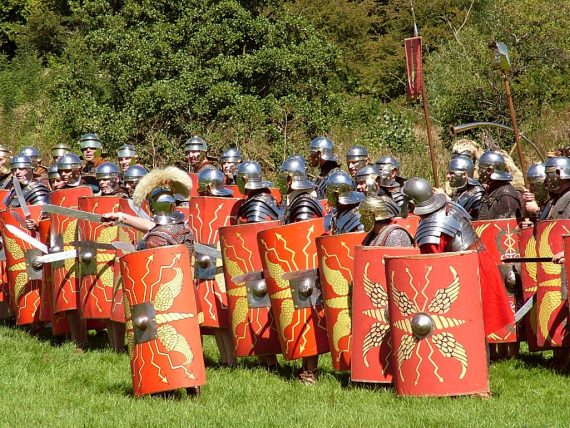It has been said that truth is stranger than fiction. This is definitively the case with the following true facts:
Most animals don’t eat moss because it’s hard to digest and has little nutritional value. But reindeer fill up with lots of moss because it contains a special chemical which helps keep reindeer warm in the icy arctic temperatures. Moss, for the reindeer, acts like antifreeze in a car.
A lightning bolt generates a temperature five times hotter than the sun.
One cup of neutron star weighs about 480 million tons.
If you lived in Virginia 300 years ago, you could have paid your taxes with tobacco.
If you are scared of spiders, you will be happy to learn that you are more likely to be killed by a champagne cork than by a spider.
One thousand years ago, the Grand Vizier of Persia had to make a long journey. But he was an avid reader and couldn’t stand the thought of being away from his scrolls for so long. So he had his 117,000 scrolls loaded onto 400 camels, and trained servants to keep the camels in alphabetical order as they followed him around on his journey.
However, such facts, though interesting and true, are not that helpful. Trivial facts such as these generally provide no help at all for what matters in life. The best kind of truth is that which will help us in life, will answer our questions, and will guide us into happiness, peace, and prosperity.

We want to know when our kids are telling the truth. We want to know when we’re being lied to at work. We want to know when the news is fake and when politicians are lying. Most significantly of all, we want to know truths of eternal importance, such as what God is like, what He expects of us, how He wants us to treat other people, whether or not our sins are forgiven, and how we can know that we will spend eternity with Him.
But Satan, as the father of lies, does not want us to know the truth about such questions. Satan seeks to spread as much disinformation as possible about these critical questions. Remember, the one tactic the devil uses in setting traps for us is to question and challenge the truth of God’s Word. God has revealed in Scripture the answers to our most pressing questions about life and eternity, and Satan seeks to obscure, challenge, and distort the truth of what God has revealed.
So, for example, while God repeatedly informs us in Scripture that we receive eternal life by faith alone in Jesus Christ alone, there are numerous books, pastors, schools, and organizations which teach the opposite, that in order to receive eternal life we must submit to the Lordship of Jesus Christ, stop sinning, get baptized, attend church, read the Bible, pray, tithe, and a whole host of other human activities.
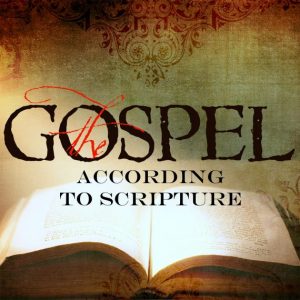 But eternal life is not earned through good works; it is the free gift of God’s grace to anyone and everyone who simply and only believes in Jesus for it. The devil doesn’t want people to know this, and so he works tirelessly to confuse and confound the gospel message (take my courses on the gospel to gain clarity about the gospel).
But eternal life is not earned through good works; it is the free gift of God’s grace to anyone and everyone who simply and only believes in Jesus for it. The devil doesn’t want people to know this, and so he works tirelessly to confuse and confound the gospel message (take my courses on the gospel to gain clarity about the gospel).
Similarly, the clearest revelation of God that we have in Jesus Christ shows us that God is non-violent. God does not want, seek, or demand the death of anybody. God does not want, seek, or demand blood sacrifice. The Gospel accounts show us that it is we humans who want such things. It is Satan, the accuser, who demands death and destruction. But Satan loves to twist and distort the character of God by getting people to think that God, like Satan, demands blood sacrifice as a payment for sins. But God is not like Satan; God looks and acts just like Jesus (read my book, (#AmazonAdLink) Nothing but the Blood of Jesus, to learn more).
Satan not only spreads lies about the gospel and lies about the character of God, Satan also spreads lies about the church, lies about sin and forgiveness, lies about human relationships and what is important in life, and lies about our own worth, dignity, and value. Satan tell lies to us about us, and sadly, we believe these lies. These lies then destroy our lives, our health, and our relationships. These lies cause us to get stuck in the past and worry about the future. They introduce fear into our lives about whether or not God loves and forgives us.
But God wants to liberate us from all such lies.
He has given us truth so that the truth can set us free (John 8:32). Knowing the truth allows us to live as God intended and to experience the joy and satisfaction of life.
So it is with good reason that when Paul turns to write in Ephesians 6:14 about the spiritual armor we are to wear, he begins with the belt of truth. With the very first piece of armor, he tells us that God has given us something to help us break through all the dark lies of Satan, and his deceptive twisting of the truth.
As with each piece of spiritual armor, it is first of all important to know how the actual piece of armor worked and functioned on a Roman soldier. This will enable us to know how the spiritual piece of armor will help us as Christians, and how we can follow the instructions of Paul to take it up and put it on. So let us begin with how the belt functioned for Roman soldiers in Paul’s day.
The Belt for the Soldier
Everybody knows what a belt is. It is a long strip of leather or fabric, usually with a buckle on one end, which we fasten around the waist to keep our pants up or as a fashion accent to our outfit. But the belt of the Roman soldier served a critical function in the overall purpose of their armor.
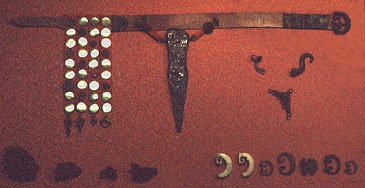
The belt of the Roman soldier was about 2-4 inches in height and was made of leather, covered with decorative metal strips. It had a buckle just like modern belts, and had little straps or attachments to help connect the belt with the sword and the breastplate.
Quite often, some straps with metal disks or studs on them were attached to the front of the belt. These studded straps did nothing to provide protection for the soldier, and archaeologists and historians have not been able to discover a purpose for these, leading many to believe that they were purely ornamental, and may have represented rank or awards. This is likely true since these metal studs were often made from expensive material such as gold, silver, and ivory.
Furthermore, only soldiers were allowed to wear this kind of belt, and most of them wore it all the time, even when they were out of uniform. Therefore, the belt functioned as a status symbol of their position and authority in the Roman army. It set them apart and identified them in public as a member of the elite Roman military.
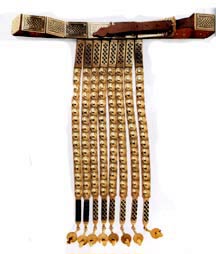 As such, much like a modern police officer might be disciplined by taking away his badge. Soldiers who were dishonorably discharged also had their belts taken away from them. There are records of soldiers who became Christians symbolizing their conversion in public by taking off their belts and throwing them away.
As such, much like a modern police officer might be disciplined by taking away his badge. Soldiers who were dishonorably discharged also had their belts taken away from them. There are records of soldiers who became Christians symbolizing their conversion in public by taking off their belts and throwing them away.
However, this does not mean that the belt was nothing more than an ornamental status symbol. If we were to rank the relative importance of the various pieces of armor listed here by Paul, most of us would put the breastplate, helmet, or shield at the top of the list. After all, the breastplate protects the lungs and heart. The helmet protects the head. The shield provides general protection of the whole body.
But the belt? It seems to be a relatively minor and unimportant piece of the Roman military armor. However, this is not the case. Paul mentions the belt first in his list of armor, and when we understand the role of the belt in the Roman soldier’s armor, we see how important it was in protecting the soldier on the field of battle. The belt served three primary functions.
First, beneath their armor, the Roman soldier wore a loose fitting tunic. The belt helped keep the soldier from getting tangled in his own tunic. The belt kept the tunic cinched in tight and close. If the soldier had a longer tunic, he would take the four corners of the tunic, and fold it up underneath the belt to keep his legs free and to keep from getting tangled. This was called “girding up the loins.”
In fact, here in Ephesians 6:14, probably the most literal translation of the verse would be “Stand therefore, having girded your loins with truth.” The loin is the upper part of the thigh, and so when the tunic was wrapped up and around the groin area and then tucked into the belt, it was called girding up the loins so that the tunic did not trip the soldier in battle.
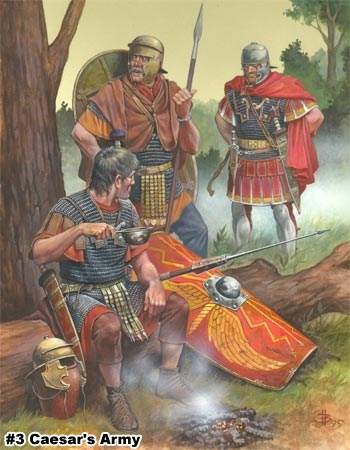 But this was not the only purpose of the belt. The belt was also used to help carry the load of the heavy packs the soldiers wore while marching. When they marched, their packs could weigh 50-100 pounds, carrying their gear, food, and bedroll. This is a lot of weight to carry all on your shoulders during a ten or twenty mile hike, and so the Roman military devised a way to attach the packs to the belts of the soldiers. This kept the pack tight against the back so that it didn’t swing or bounce around while marching (which was often closer to a run), and it helped redistribute some of the weight of the back off of the shoulders and down onto the hips.
But this was not the only purpose of the belt. The belt was also used to help carry the load of the heavy packs the soldiers wore while marching. When they marched, their packs could weigh 50-100 pounds, carrying their gear, food, and bedroll. This is a lot of weight to carry all on your shoulders during a ten or twenty mile hike, and so the Roman military devised a way to attach the packs to the belts of the soldiers. This kept the pack tight against the back so that it didn’t swing or bounce around while marching (which was often closer to a run), and it helped redistribute some of the weight of the back off of the shoulders and down onto the hips.
Modern hiking backpacks have similar weight-distribution properties. The best backpacks not only have shoulder straps, but also a belt that clicks together around the waist, so that the pack is secured in place and some of the weight of the pack is carried on the hips.
Thirdly, and maybe most importantly, the belt kept the breastplate tight against the soldier’s chest and his sword secure and ready at his side. Without the belt, the breastplate would wobble around and bang against the chest of the soldier as he tried to move or run.
Yes, the breastplate was also secured in place around the back, but then it was firmly tied down in position by attaching it to the belt, it would not ride up into the neck, thereby making it difficult for the soldier to breathe. And of course, it held the sword at the soldier’s side where it was ready to be drawn for battle.
Imagine, then, what would happen to the soldier who tried to enter battle without his belt. His legs would get tangled in his tunic, his breastplate would flop around and choke him, and his sword would drop to the ground. In short, he wouldn’t be much good in battle.
In light of all this, the belt was one of the most important pieces of the soldier’s armor. It is likely the same for any police officer today. The duty belt of the officer carries all of their most important gear. It carries the gun, extra magazines of bullets, their handcuffs, radio, keys, a flashlight, the night stick, pepper spray, first aid kits, and almost anything else the officer thinks he might need when chasing down a suspect.
Or you can think of a carpenter and his tool belt. It holds a hammer, nails, screws, drill, a tape measure, and anything else he needs while on the construction site. Belts are like a portable toolbox.
So this is why Paul lists the belt first when he writes about the spiritual armor we have from God. First and foremost, we are told to take up and put on our belt. Paul calls it the belt of truth.
Based on what we have learned about the belt for the Roman soldier, why does Paul equate the belt with truth? What analogy between a belt and the truth is Paul trying to make? How is the belt of truth helpful for Christians who finds themselves in spiritual battle? It is to this topic we turn as we consider how the belt of truth functions for the Christian.
The Belt for the Christian
Paul equates the Roman soldier’s belt with truth because just as the belt marked a person as a Roman soldier as they wore it around all the time, truth is the identifying characteristic of the Christian. Truth is one of the primary things that sets Christianity apart from everyone else in the world.
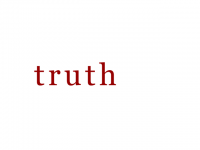 This is not to say that other people and various religions don’t have truth. They do. But Christianity has some of central truths that are not available anywhere else, and these truths are essential for understanding life, God, human culture, and what is needed to receive eternal life. These truths are all found through Jesus Christ and the revelation of the gospel.
This is not to say that other people and various religions don’t have truth. They do. But Christianity has some of central truths that are not available anywhere else, and these truths are essential for understanding life, God, human culture, and what is needed to receive eternal life. These truths are all found through Jesus Christ and the revelation of the gospel.
For example, the truth of Christianity teaches that life is about serving others. While most people in this world put themselves first, and put personal goals, needs, and desire above everyone else, Jesus shows us that we are to die to ourselves and put others first.
Furthermore, we know from Scripture that this life is not all there is. Though many in this world spend all their time and energy striving after money, power, possessions, fame, and glory, Christianity teaches that such things are but a puff of smoke. They are worthless and insignificant in light of eternity, and it is for things of eternity that we must work and strive.
When it comes to God, Christianity teaches that God looks and acts just like Jesus. God is not a god of violence and wrath. He does not seek to kill and destroy. God is a God of life, love, and liberty. He is a God who freely forgives, extends unconditional grace toward all, and seeks to serve rather than be served. Such a view of God is not found anywhere else in human history.
Only Christianity teaches that God would rather die for us than ask us to die for Him. He demands nothing from us in order to be loved and accepted by Him. This truth about God is radical and shocking, but it is the truth found in Jesus Christ.
Scripture further teaches that human culture is built upon violence, bloodshed, and warfare, but God has called us away from such things. While many philosophies, religions, and teachings talk about the evils of violence, nearly all of them also teach that the way to defeat the evil of violence directed toward us is to combat it with great violence.
All human civilization and culture is founded on the “myth of redemptive violence,” that our “good” violence can be used to stop their “bad” violence. But the Bible reveals that everybody thinks their violence is “good” violence and everyone else’s is “bad.” And when we all try to defeat everyone else’s bad violence with our own “good” violence, the only result is an ever-increasing contagion of violence that threatens to destroy and consume us all.
God’s solution to violence, as primarily revealed in Jesus Christ, is to defeat violence, not with more violence, but with forgiveness. As God incarnate suffered the injustice of false accusations, torture, and being murdered on the cross, He revealed the heart of God when He cried out “Father, forgive them, for they know not what they do.” This is a truth you will not find anywhere else in the world except in Christianity.
And then there is the truth of eternal life. If you ask the average person on the street, or the average person of nearly any religious group (sadly, many in the “Christian religion” as well) what it takes to receive eternal life or spend eternity with God, you will almost always be told that people must try to obey the laws and commandments, be a good person, stop sinning, and do what God says.
But the good news of Christianity does not teach this. The gospel teaches that since we can never be good enough to earn our way to heaven, since we can never do enough good works to merit eternal life, God decided to give eternal life as a free gift to anyone who wants it. God wants to spend eternity with us, but since we cannot ever work our way into God’s good graces, God decided to extend His grace to us freely.
Eternal life is the absolutely free gift of God to anyone and everyone who simply and only believes in Jesus for it (John 3:16; 5:24; 6:47; etc.). This absolutely free offer of eternal life by God’s grace is another truth that is unique to Christianity.
There are numerous other examples of truth that could be discussed, but these are some of the central truths found in Christianity and in Scripture that set us apart from everyone else and which make the belt of truth so essential in spiritual warfare.
 For just as the Roman soldier wore his belt at all times, even when he was off duty, so also the Christian is never off duty. We are to continually live in light of the truth we have received from God. We should never let go of the truth. Just as it was shameful for a Roman soldier to have his belt taken away, so also, it is shameful for a Christian to deny the truth we have received from God.
For just as the Roman soldier wore his belt at all times, even when he was off duty, so also the Christian is never off duty. We are to continually live in light of the truth we have received from God. We should never let go of the truth. Just as it was shameful for a Roman soldier to have his belt taken away, so also, it is shameful for a Christian to deny the truth we have received from God.
The belt of truth also helps keep our life on track. Remember, the belt is attached to the breastplate, which Paul equates with righteousness in the second half of Ephesians 6:14. We will consider this item of the spiritual armor in the next study, but since the two pieces were connected on the armor of the Roman soldier, it is important to note how truth is connected to righteousness.
First of all, as already discussed, we can only receive the righteousness of God by believing in Jesus for it. No amount of good works can gain for us the perfect and complete righteousness of God.
Beyond this, Paul also has in mind the righteous type of living that God wants and desires for us. We are to live righteously, not because it earns us merit with God or helps us gain eternal life, but because the righteous life is the best type of life there is. The righteous life is the most fulfilling and satisfying life.
God did not give us rules to keep us from enjoying life, but so that we could enjoy it to the full. His laws are not too restrictive; they are liberating. They free us from sin and temptation so that we can life free from addiction and slavery. God’s truth sets us free. As Jesus said in John 8:32, “You shall know the truth and the truth shall set you free.” The only way truth is restrictive is that it keeps us from becoming controlled, enslaved and entangled from the things that will really restrict us. Correctly understood and rightly applied, truth is liberating.
If you are driving up a mountain road with a cliff on one side, the signs on the side of the road are designed to get you to the top of the mountain safely so you can enjoy the view and get down the other side to your destination. But if you decide to ignore the signs because they limit how fast you can drive or because you don’t want to heed the warnings about the hairpin turn coming up, you will not make it to the top of the hill. You will die. The signs are not there to prohibit your driving experience, but to help you enjoy the mountain rode to its fullest extent. This is how the truth of God’s laws work as well.
There is one final aspect of the belt of truth to consider. The belt of truth is not just about knowing the truth and living the truth, but also about telling the truth. We must not only hold fast to the truth that has been revealed to us, but must also speak the truth to others in everything we say. We must surround ourselves with the truth and speak the truth to others if we are going to be effective soldiers of Jesus Christ on the spiritual field of battle.
So the only remaining question is how to put on the belt of truth. We have seen the importance of the belt for the soldier, and how the belt represents truth in the life of the Christian, but none of this will help us if we do not know how to take up and put on the belt of truth.
Putting on the Belt
To understand how to put on the belt of truth, we must first recognize that this belt of truth is God’s belt. Isaiah 11:5 says that God wears a belt of righteousness and faithfulness, but the Greek translation of this text (the LXX) uses the word “truthfulness” instead of faithfulness. Paul likely had the Greek version of this text in mind when he wrote about the belt of truth. So if this belt belongs to God, and He has given it to us, then how can we take it up and put it on?
By referring to Isaiah 11:5, Paul has revealed that the truth of this belt is not human truth, but God’s truth. It belongs to God and comes from God. This truth is the unwavering standard of truth that is found in God alone. And where is this truth found? It is found in Scripture. Psalm 119:160 says that God’s Word is truth. Jesus says the same exact thing in John 17:17, when, in praying to God, He says, “Your Word is truth.” In Colossians 1:15, Paul calls the Bible—specifically the gospel message—the “word of truth.” Similarly in 2 Timothy 2:15, we are told as Christians to correctly handle the Bible as the Word of truth.
If we want to put on this first piece of spiritual armor, we need to dive into and dig around in Scripture.
In Proverbs 6:21-23, we are told by the wisest man who ever lived, that the good life comes from taking the truth of the Bible and binding it on our heart, tying it around our neck, think about it when we walk, when we sleep, when we wake up. In other words, we take up and put on the belt of truth by taking up and studying the Word of God.
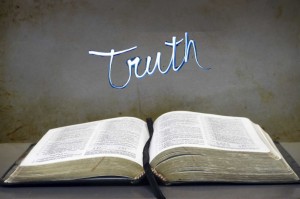 Some might object to this by saying that the belt of truth cannot refer to reading and studying the Word of God, because down in Ephesians 6:17, the sword of the Spirit is also identified as the Word of God. How can the belt of truth and the sword of the Spirit both be equated with the Word of God?
Some might object to this by saying that the belt of truth cannot refer to reading and studying the Word of God, because down in Ephesians 6:17, the sword of the Spirit is also identified as the Word of God. How can the belt of truth and the sword of the Spirit both be equated with the Word of God?
We will discuss this more when we look at the sword of the Spirit, but the answer is discovered in remembering that on the armor of the Roman soldier, the sword hangs on the belt. That is, if you don’t have the belt, you also don’t have your sword. So the two items are intimately connected. Therefore it is not surprising for the belt of truth to be so closely associated with the sword of the Spirit.
But how are the two different?
The short answer is that the belt of truth is obtaining or learning the truth of Scripture while the sword of the Spirit is using or practicing Scripture to defend ourselves against Satan. We put on the belt by reading and studying the Bible. By listening to good, biblical preaching and teaching. By reading books that explain Scripture and theology. By memorizing verses from the Bible.
Putting on the belt of truth is putting on the truth of the Bible. Understanding what it says. Knowing what it teaches. This is how we take up and buckle on the belt of truth. And when we do this, the sword comes with the belt. We use the sword by using the truths of Scripture to defend ourselves against the attacks of the devil.
When Jesus was tempted by the devil in the desert, Jesus was able to turn away the attacks of the devil by quoting verses which defused the devil’s tricks. This was Jesus using the sword of the spirit to defend Himself against the wiles of the devil. But Jesus was only able to do this because He had previously spent time studying and learning the Scriptures so that He was familiar with the Bible when He needed the truths that are found within. It is only because Jesus wore the belt of truth that He was able to take up the sword of the Spirit and defend Himself when He was attacked by the devil.
So we put on the belt of truth by putting on the Word of God. We wrap it around us and cinch it tight by getting daily into the pages of Scripture. It is the truth of the Word of God which enables us to stand against the lying and deceiving wiles of the devil.
The devil has set his traps. And these traps are everywhere, both inside and outside the church. He is like a fisherman, reeling in ignorant people, who do not know the truth revealed in the Word of God. Without the Bible, we can’t know anything for sure about God, about Jesus, about ourselves, or about eternal life.
Furthermore, if the Word of God is not true, then we can know very little about what is true. Either the Bible is your foundation, or you have no foundation. Either the Scripture is authoritative for your life and theology, or you have no authority other than yourself, based on your own emotions, experiences, and opinions.
 So we must accept the Bible as the true word of God, as the primary authority on all matters about which it speaks. Only on this way do we put on the belt of truth.
So we must accept the Bible as the true word of God, as the primary authority on all matters about which it speaks. Only on this way do we put on the belt of truth.
So gird up your loins. Buckle the “Bible Belt” around you, so you can stand secure in the promises and truths it contains. The enemy is coming with his lies and deceptions, but with the belt of truth firmly clasped around your waist, you will be able to stand against the wiles of the devil.
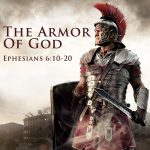 Do you want to learn about spiritual warfare and how to put on the full armor of God? If you want to defeat sin and gain victory in your life over temptation so you can better follow Jesus, take my course on the Armor of God as it is explained in Ephesians 6:10-20.
This course costs $297, but when you join the Discipleship group, you can to take the entire course for free.
Do you want to learn about spiritual warfare and how to put on the full armor of God? If you want to defeat sin and gain victory in your life over temptation so you can better follow Jesus, take my course on the Armor of God as it is explained in Ephesians 6:10-20.
This course costs $297, but when you join the Discipleship group, you can to take the entire course for free.


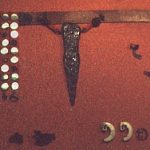
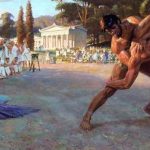
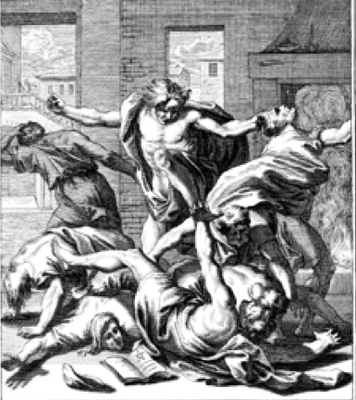 Near the end of Paul’s time in Ephesus, some itinerant Jewish teachers came to town and heard what Paul was doing, and so decided to start their own little deliverance ministry by casting out demons in the name of Jesus.
Near the end of Paul’s time in Ephesus, some itinerant Jewish teachers came to town and heard what Paul was doing, and so decided to start their own little deliverance ministry by casting out demons in the name of Jesus.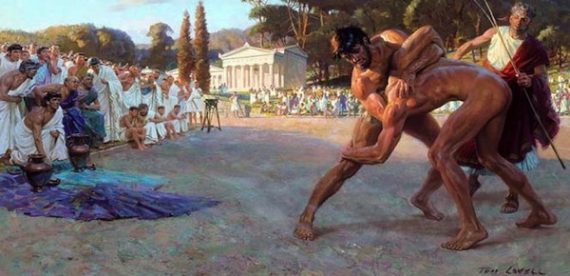
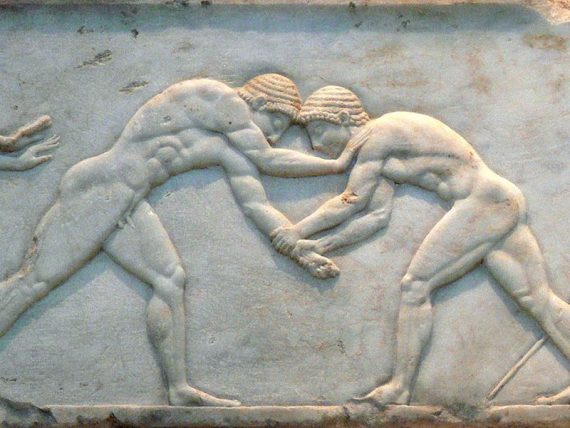
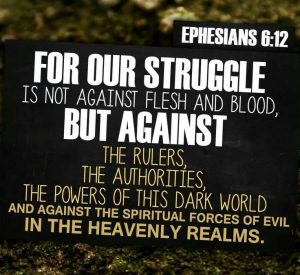 We must stand against the devil and his minions with every ounce of our effort and being. When it comes to this battle between the soldiers of Christ and our enemy of darkness, there is no common ground. There is no compromise. There is no peace process. The two sides are totally against one another.
We must stand against the devil and his minions with every ounce of our effort and being. When it comes to this battle between the soldiers of Christ and our enemy of darkness, there is no common ground. There is no compromise. There is no peace process. The two sides are totally against one another.

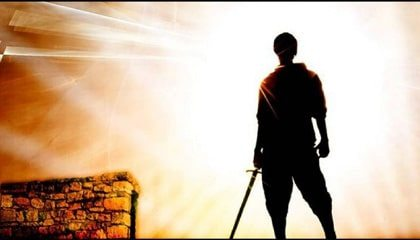
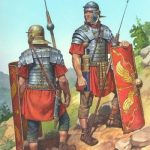
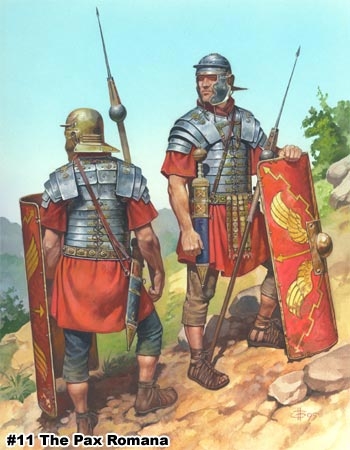 The first part of the battle plan is to put on the whole armor of God. Paul states this instruction twice in Ephesians 6:11, 13 when he writes, “Put on the whole armor of God” and “take up the whole armor of God.”
The first part of the battle plan is to put on the whole armor of God. Paul states this instruction twice in Ephesians 6:11, 13 when he writes, “Put on the whole armor of God” and “take up the whole armor of God.”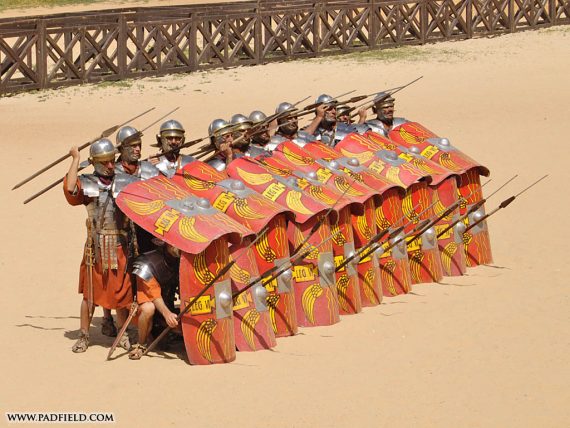

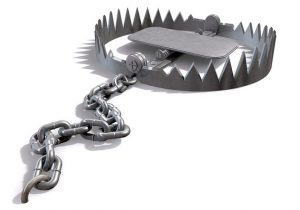 Along with three main types of temptations, there are also three main targets for these temptations. There are three areas that Satan is constantly trying to undermine and destroy. These three targets are the church, the family, and your own personal life.
Along with three main types of temptations, there are also three main targets for these temptations. There are three areas that Satan is constantly trying to undermine and destroy. These three targets are the church, the family, and your own personal life. He raises doubts in our minds about the truth of Scripture. He twists and perverts what the Bible says. He makes subtle changes to the Word of God. He adds to the Word of God, or subtracts from the Word of God. He rips verses out of context from the Word of God. He exaggerates the strictness of the boundaries in God’s Word. He denies the consequences of disobeying God’s Word. He distorts the supreme revelation of God in Jesus Christ to make us think that Jesus reveals the opposite of what He actually did reveal.
He raises doubts in our minds about the truth of Scripture. He twists and perverts what the Bible says. He makes subtle changes to the Word of God. He adds to the Word of God, or subtracts from the Word of God. He rips verses out of context from the Word of God. He exaggerates the strictness of the boundaries in God’s Word. He denies the consequences of disobeying God’s Word. He distorts the supreme revelation of God in Jesus Christ to make us think that Jesus reveals the opposite of what He actually did reveal. When people recognize that Satan is real, Satan tries to get them to think that he is equal with God.
When people recognize that Satan is real, Satan tries to get them to think that he is equal with God.
 But the Christian who truly steps out to follow Jesus into the dark and hellish places of earth will experience great difficulties, trials, and roadblocks in life. Such Christians will be called to love those they would rather hate, to forgive those who deserve nothing but death, to be patient with those who are rude and condescending, and to serve those who are the least enjoyable to be around.
But the Christian who truly steps out to follow Jesus into the dark and hellish places of earth will experience great difficulties, trials, and roadblocks in life. Such Christians will be called to love those they would rather hate, to forgive those who deserve nothing but death, to be patient with those who are rude and condescending, and to serve those who are the least enjoyable to be around.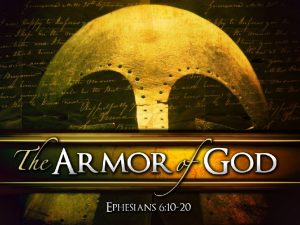 Therefore, since Christians who seek to follow Jesus into this world will face the resistance and struggles of spiritual warfare, it is imperative for Christians to know what is involved in spiritual warfare and how we can prepare ourselves to stand in the midst of this struggle.
Therefore, since Christians who seek to follow Jesus into this world will face the resistance and struggles of spiritual warfare, it is imperative for Christians to know what is involved in spiritual warfare and how we can prepare ourselves to stand in the midst of this struggle. The movie “Hacksaw Ridge” is a true story about Private Desmond Doss. He was drafted into the army for World War II, but since he was a pacifist, he refused to carry a gun or shoot others. However, he wanted to serve his country and do his part. He ended up earning the Congressional Medal of Honor for saving 75 fellow soldiers in the Battle of Okinawa, all without firing a single shot.
The movie “Hacksaw Ridge” is a true story about Private Desmond Doss. He was drafted into the army for World War II, but since he was a pacifist, he refused to carry a gun or shoot others. However, he wanted to serve his country and do his part. He ended up earning the Congressional Medal of Honor for saving 75 fellow soldiers in the Battle of Okinawa, all without firing a single shot. The reason is that although we are plugged into the power of God, there are things in our life that restrict its flow. Picture your life as a spiritual fuse box.
The reason is that although we are plugged into the power of God, there are things in our life that restrict its flow. Picture your life as a spiritual fuse box.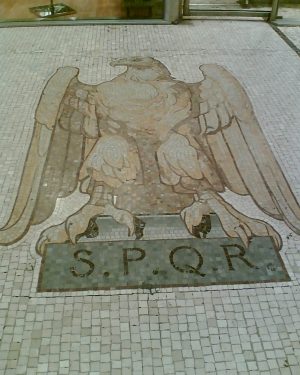 After taking their oath of service, they were branded or marked with the letters SPQR, which was a Latin acronym showing that the soldier belonged to the “Senate and People of Rome.”
After taking their oath of service, they were branded or marked with the letters SPQR, which was a Latin acronym showing that the soldier belonged to the “Senate and People of Rome.”
 This is not physical strength Paul has in mind, but spiritual. He wants us to exercise and work out spiritually. But just as with physical body building, spiritual strength training does not happen naturally. You do not become physically strong by sitting in a couch watching TV, and you do not become spiritually strong by sitting in a pew watching a Bible teacher. You will only become strong by getting up and engaging in strenuous spiritual activity.
This is not physical strength Paul has in mind, but spiritual. He wants us to exercise and work out spiritually. But just as with physical body building, spiritual strength training does not happen naturally. You do not become physically strong by sitting in a couch watching TV, and you do not become spiritually strong by sitting in a pew watching a Bible teacher. You will only become strong by getting up and engaging in strenuous spiritual activity.